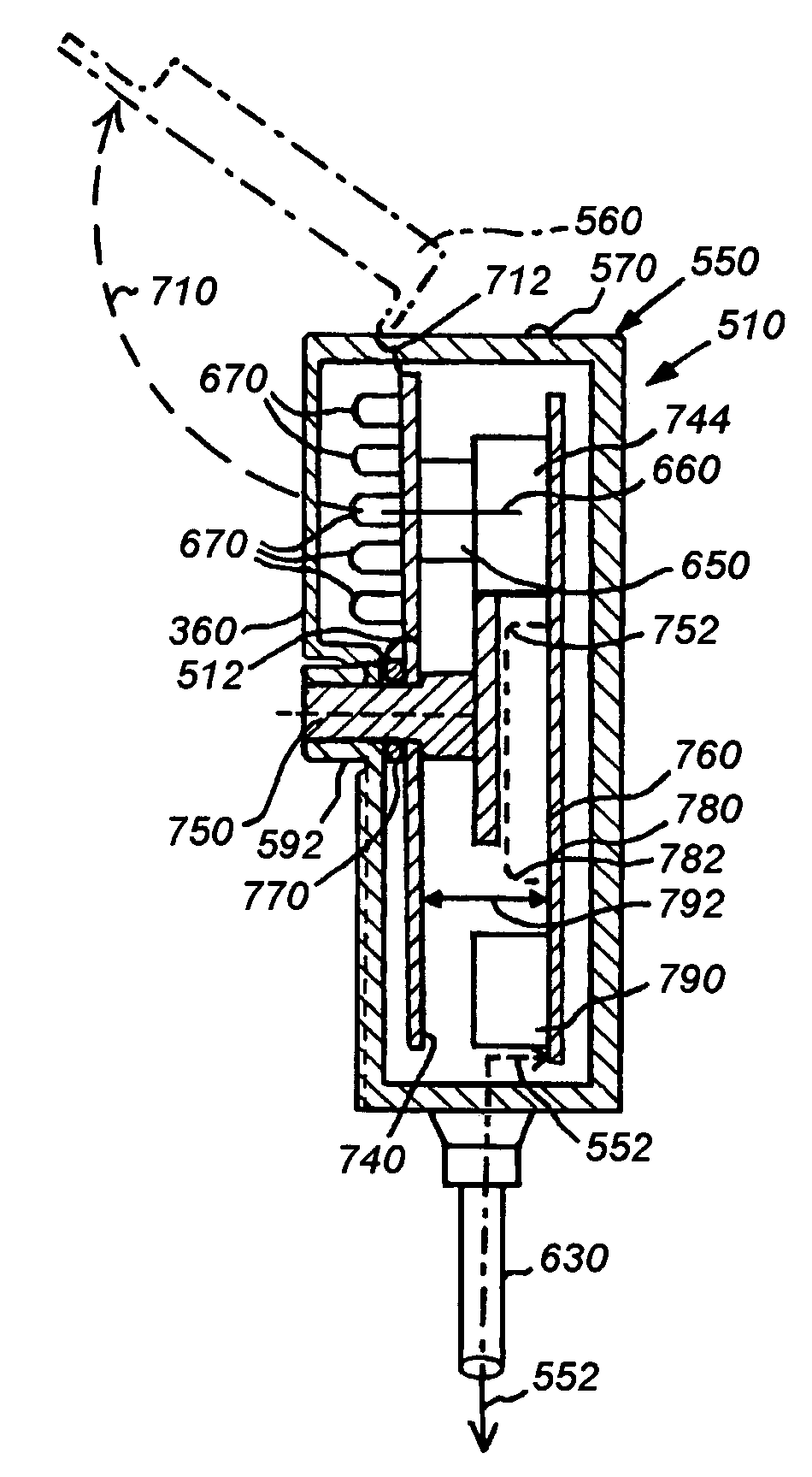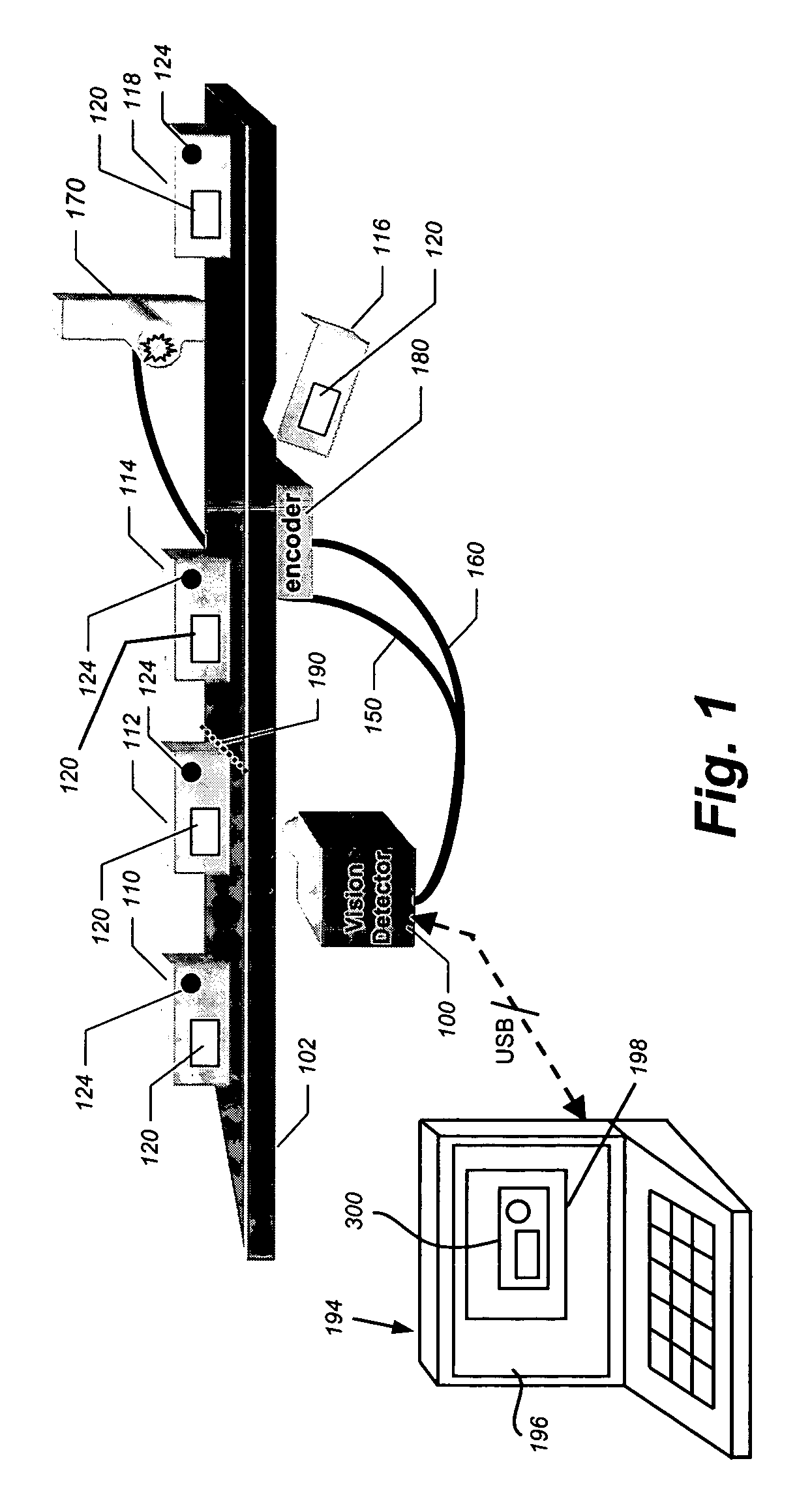Focusing mechanism for a vision detector
a technology of focusing mechanism and detector, which is applied in the direction of camera focusing arrangement, printers, instruments, etc., can solve the problems of human error risk, difficult arrangement of photodetectors, and difficulty in automatic inspection using photodetectors
- Summary
- Abstract
- Description
- Claims
- Application Information
AI Technical Summary
Benefits of technology
Problems solved by technology
Method used
Image
Examples
Embodiment Construction
[0067]A vision detection and inspection apparatus (termed “vision detector” herein) 510 is shown in FIG. 5. The vision detector 510 of this illustrative embodiment functions generally in accordance with principles described in the above-incorporated-by-reference METHOD AND APPARATUS FOR VISUAL DETECTION AND INSPECTION OF OBJECTS, by William M. Silver, and summarized above in connection with the exemplary vision detector 100 (FIG. 1). In this illustration, the vision detector 510 of the illustrative embodiment is mounted along a moving (arrow 512) production line characterized by a conveyor 514. Alternatively, the line can be stationary and the vision detector may move. In any case, there is a relative motion between objects on the line and the vision detector 510. The production line features a stream of manufactured objects 520 and 522 each passing through the field of view of the vision detector 510 in succession. In this illustration the object 520 is presently in the field of vi...
PUM
 Login to View More
Login to View More Abstract
Description
Claims
Application Information
 Login to View More
Login to View More - R&D
- Intellectual Property
- Life Sciences
- Materials
- Tech Scout
- Unparalleled Data Quality
- Higher Quality Content
- 60% Fewer Hallucinations
Browse by: Latest US Patents, China's latest patents, Technical Efficacy Thesaurus, Application Domain, Technology Topic, Popular Technical Reports.
© 2025 PatSnap. All rights reserved.Legal|Privacy policy|Modern Slavery Act Transparency Statement|Sitemap|About US| Contact US: help@patsnap.com



